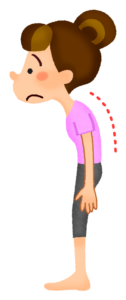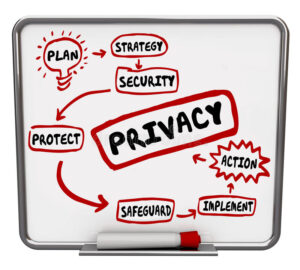Before this class, I thought…
Before this class, I knew about the design process from CS147. Separately, I knew that it was difficult to change behavior. From my own experience, I know that it takes a lot for me to change my behavior, even when I know that doing so will positively benefit my life in some way, or that not doing so will negatively affect my future. For instance, I know that I should eat at least one serving of vegetables per day, but when I pass by the bland, wilted looking vegetables in the dining hall, that fact goes out the window. I know that if I don’t stand up straight I’ll have back problems in the future, but enduring the pain of exiting my natural comfortable posture is just too difficult.
Me, with bad posture, unwilling to change my behavior
Class experiences / work
I loved going through each step of the design process. The studies — baseline and intervention — were particularly valuable for our project. In a short amount of time, these studies uncovered a lot of insightful information in my team’s problem space. While I did enjoy all of the mappings that we did (affinity and frequency grouping, connection circles, fishtail diagrams, etc.) to organize our insights, it sometimes felt repetitive, like the same insights were coming up each time. Perhaps that means my team wasn’t diving deep enough into the activities. Nevertheless, on the surface, a lot of the mapping activities we did in class seemed to produce relatively similar results.
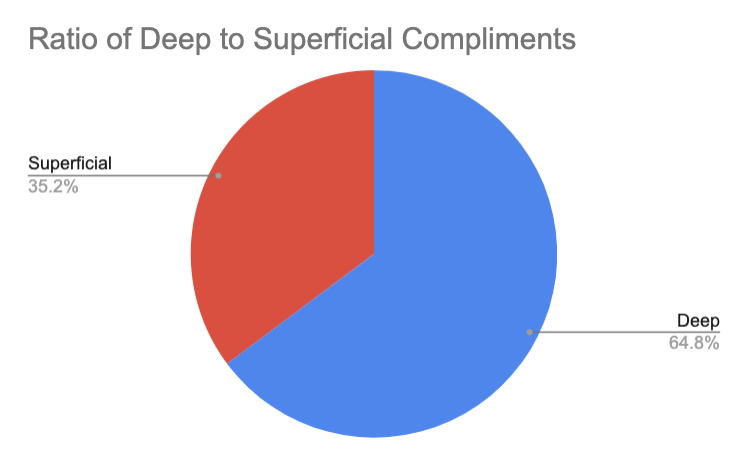
Intervention study insights
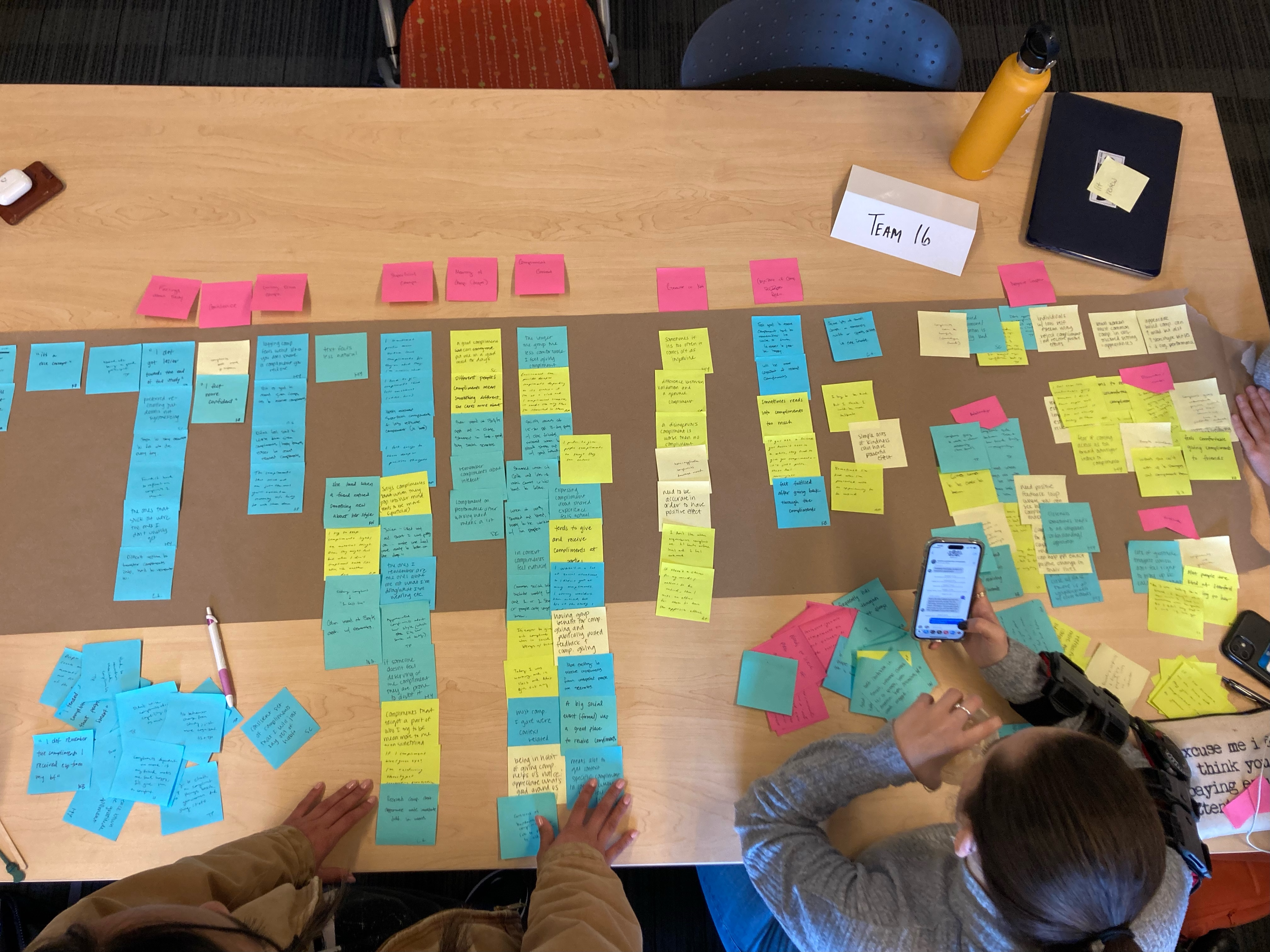
Mapping activity: affinity grouping
For me, what is still unresolved about the project is that I’m not sure if the process of using the app will get old. Unlike traditional social media platforms, the content of our product BeNice does not vary that much. Each day, you can send in compliments in hopes of receiving some. People were very excited about giving and receiving compliments during our intervention study, but that only went on for a week. What about a month? A year? I have doubts about the sustainability of our concept. BeReal, which our product took inspiration from, had a large spike in the beginning. While BeReal is still highly successful despite the simplicity of its content (crowned “iPhone App of the Year” during Apple’s 2022 App Store Awards), its popularity at least in my personal circle decreased as the novelty of the concept wore off. Furthermore, I would imagine that if someone didn’t receive compliments for a couple days in a row, they would be extremely likely to stop using the app altogether. This issue is pretty much non-existent on other social media platforms, including BeReal. No matter what, there will always be people posting content. Everyday, there will be new content to digest. But will there always be people specifically sending you compliments?
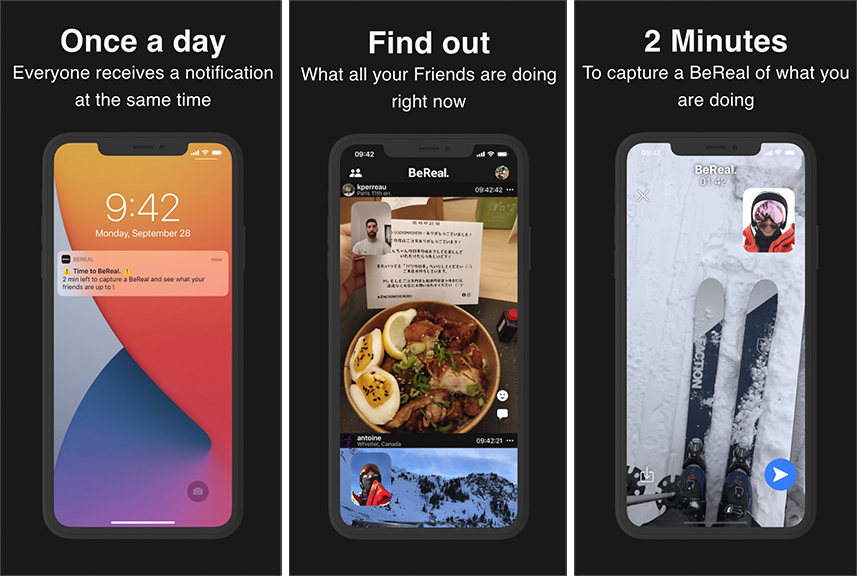
BeReal screens
Ethical considerations
Our project takes ethical considerations into account, though there are definite things that we can continue to work on. In regards to privacy and safety, BeNice allows compliments to be sent anonymously, and users to block certain individuals from sending them compliments. Though we didn’t implement our app in code, there would have to be some sort of database that stores all of the compliments so that they can be delivered to and displayed for the right users. We have not thought critically about how we would ensure security in such a database to protect user privacy.
Privacy, safety, and security
There may also be some issues surrounding the way we nudge users to give compliments. To nudge users to send compliments and ultimately spread kindness is by withholding the compliments they’ve been given until they send one out. But this may have the opposite effect for someone that is not receiving any compliments. Since there is energy required to send out a compliment, there is pressure created around receiving one. This effect may even exist for an individual who sends out compliments. What if a user sends out 10 compliments but only receives one in return? In both of these situations, users may actually feel worse about themselves, contrary to the original goal of our app.

Nudge: BeNice home screen before you send out any compliments
Now I think this
My way of thinking about design has surely evolved after taking this class. I learned there are so many ways to evaluate how a person thinks and feels when going about their everyday routine. I learned there are a million different ways to analyze someone’s behavior. Finally, while behavior change is hard, it is definitely not impossible.
Next time, when faced with a similar situation I will…
Next time, when faced with a similar situation (trying to change behavior) I will first ensure that the result of changing the behavior is worth doing so. Going all the way back to the first few lectures in CS247B, I learned just how hard behavior change is, aside from my own experiences. To change behavior, there has to be strong internal or external motivation for the user to actually do so in a way that has lasting effects. I really like the product that my team came up with, and if I were to do this class all over again, I would have still liked to go through with the same idea. Something simple, lighthearted, and fun was the perfect recipe for behavior change. I like that our solution adhered to these principles while having the potential to create widespread positive impact.

